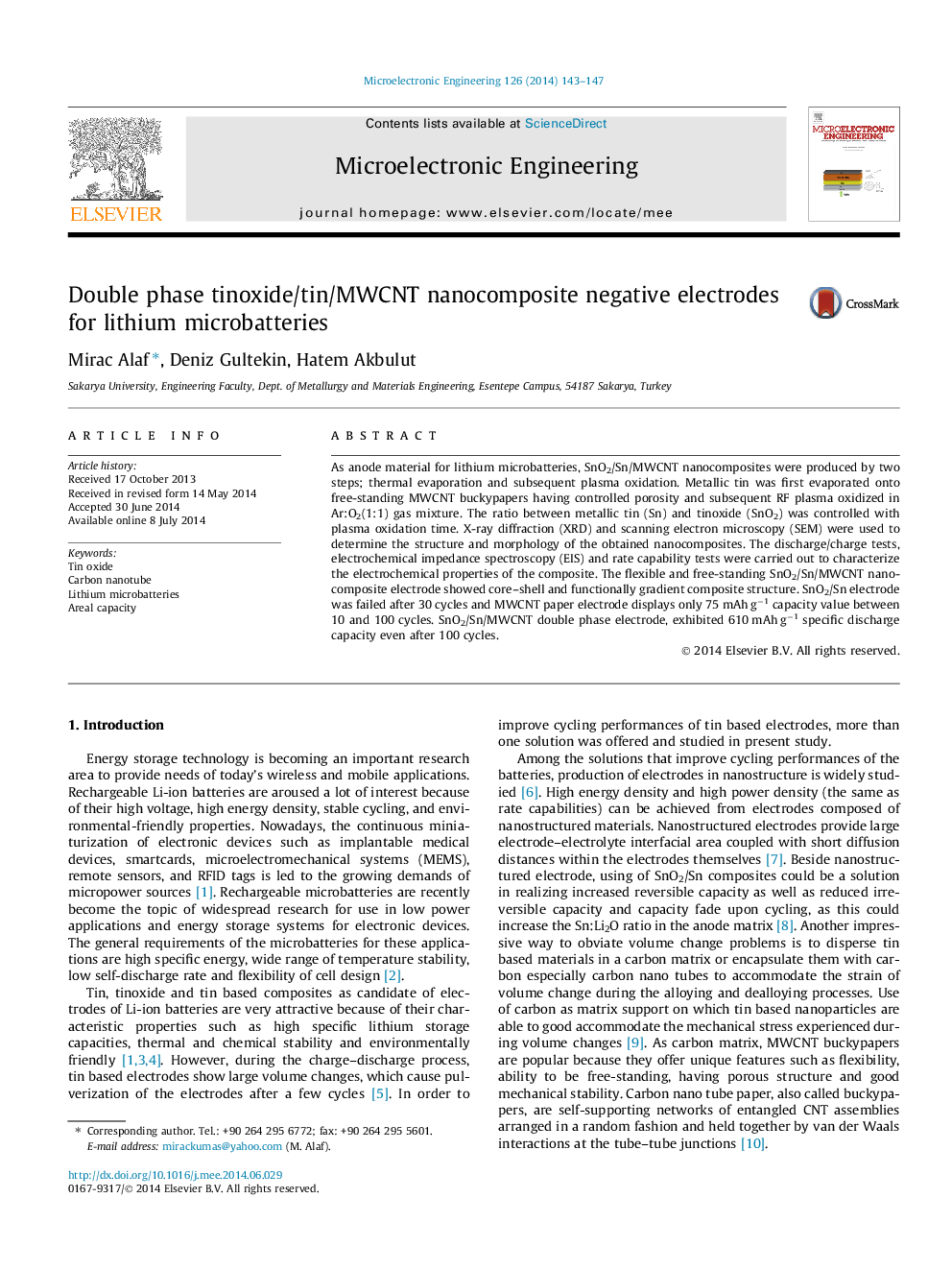| Article ID | Journal | Published Year | Pages | File Type |
|---|---|---|---|---|
| 539349 | Microelectronic Engineering | 2014 | 5 Pages |
•Double phase Sn/SnO2/MWCNT composite electrode was produced for Li microbatteries.•Electrode was produced as flexible, free-standing and light-weight.•Sn/SnO2 was deposited on the MWCNT surfaces revealing a core–shell structure.•Sn/SnO2/MWCNT electrodes prevented a capacity of 610 mAh g−1 even at 100 cycles.
As anode material for lithium microbatteries, SnO2/Sn/MWCNT nanocomposites were produced by two steps; thermal evaporation and subsequent plasma oxidation. Metallic tin was first evaporated onto free-standing MWCNT buckypapers having controlled porosity and subsequent RF plasma oxidized in Ar:O2(1:1) gas mixture. The ratio between metallic tin (Sn) and tinoxide (SnO2) was controlled with plasma oxidation time. X-ray diffraction (XRD) and scanning electron microscopy (SEM) were used to determine the structure and morphology of the obtained nanocomposites. The discharge/charge tests, electrochemical impedance spectroscopy (EIS) and rate capability tests were carried out to characterize the electrochemical properties of the composite. The flexible and free-standing SnO2/Sn/MWCNT nanocomposite electrode showed core–shell and functionally gradient composite structure. SnO2/Sn electrode was failed after 30 cycles and MWCNT paper electrode displays only 75 mAh g−1 capacity value between 10 and 100 cycles. SnO2/Sn/MWCNT double phase electrode, exhibited 610 mAh g−1 specific discharge capacity even after 100 cycles.
Graphical abstractFigure optionsDownload full-size imageDownload as PowerPoint slide
